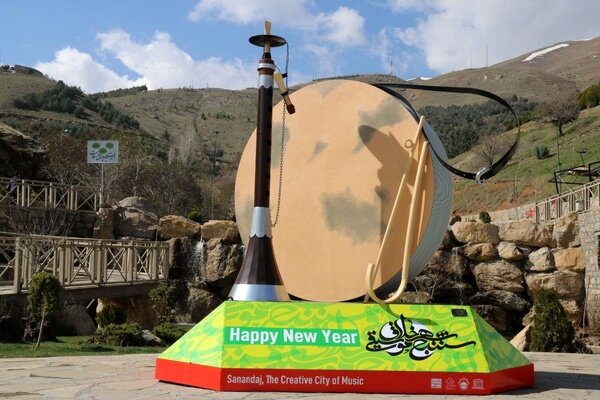Kordestan to cater for music-themed tourism

TEHRAN –Music tourism in the western Iranian province of Kordestan needs to be supported and promoted, the provincial tourism chief has said.
The development and prosperity of music tourism in the region is one of the high priorities of the province’s Cultural Heritage, Tourism, and Handicrafts Department, Yaqub Guylian announced on Monday.
In 2019, the provincial capital of Sanandaj was designated as UNESCO Creative City of Music by the UN cultural body.
The artistic capacities, rich history, and the presence of talented artists in the field of music have made Sanandaj to become a global city of music, the official explained.
The earliest records of compositions and music in the Iranian plateau dates back thousands of years based on evidence that came to light by the “pre-Iranian” archaeological records of Elam, the oldest civilization in southwestern Iran.
Iran is the birthplace of the earliest complex instruments, which date back to the third millennium BC. A number of trumpets made of silver, gold, and copper were found in eastern Iran that are attributed to the Oxus civilization and date back between 2200 and 1750 BC. The use of both vertical and horizontal angular harps have been documented at the archaeological sites of Madaktu (650 BC) and Kul-e Fara (900–600 BC), with the largest collection of Elamite instruments documented at Kul-e Fara. Multiple depictions of horizontal harps were also sculpted in Assyrian palaces, dating back between 865 and 650 BC.
Pointing to the importance of music tourism in the world he noted that this valuable branch of tourism could promote Iranian regional and folk music and lead to a tourism boom in the region.
Music tourism is a lucrative industry for many regions of the world, and it refers to people traveling to a new area in order to attend a music show or concert, or even a larger festival.
The name Kordestan refers to the region’s principal inhabitants. After the Turkish invasion of Iran in the 11th century CE (Seljuq period), the name Kurdistan was applied to the region comprising the northwestern Zagros Mountains. It was during the reign of Abbas I the Great of Iran’s Safavid dynasty (1501–1736) that the Kurds rose to prominence, having been enlisted by Abbas I to help stem the attacks of the marauding Uzbeks from the east in the early 17th century.
ABU/AFM
